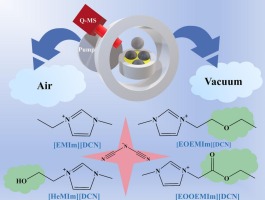Abstract
The rapid advancement of the aerospace industry is driving progress in space tribology, with ionic liquids (ILs) emerging as promising lubricants due to their low vapor pressure and superior properties. However, understanding ILs' lubrication mechanisms in vacuum conditions often depends on extrapolations from atmospheric experiments, raising questions about their consistent behavior across environments. The study explores the lubrication properties of several halogen-free, functionalized oxygen-containing ILs under air and vacuum conditions by using in-situ quadrupole mass spectrometry and molecular dynamics simulations. Results reveal significant differences in their lubricating performance and mechanisms across environments, highlighting the complexity and environmental dependence of their tribological behavior, which is crucial for designing advanced lubricants for extreme conditions.

Keywords Plus:TRIBOLOGICAL PERFORMANCE,EXPLORATION,ADDITIVES,FRICTION
Published in APPLIED SURFACE SCIENCE,Volume696;10.1016/j.apsusc.2025.162955,JUL 1 2025


